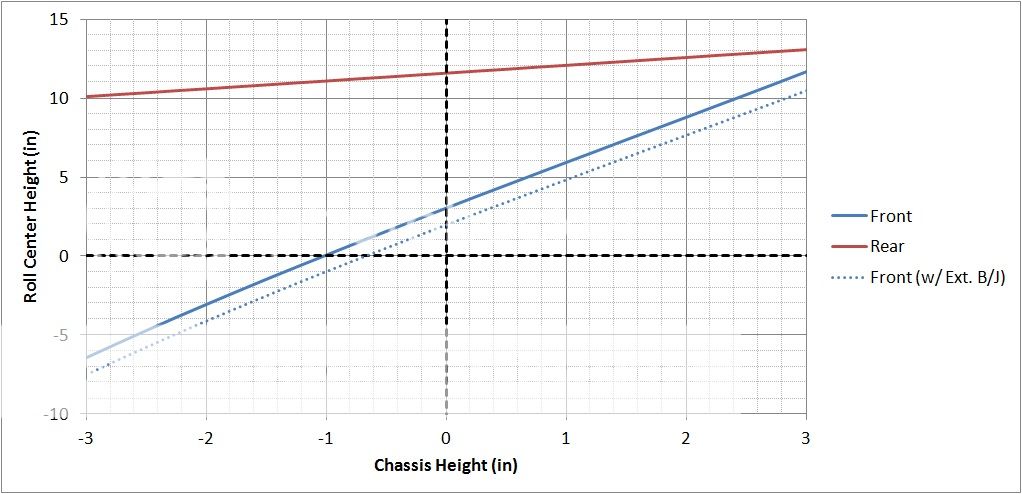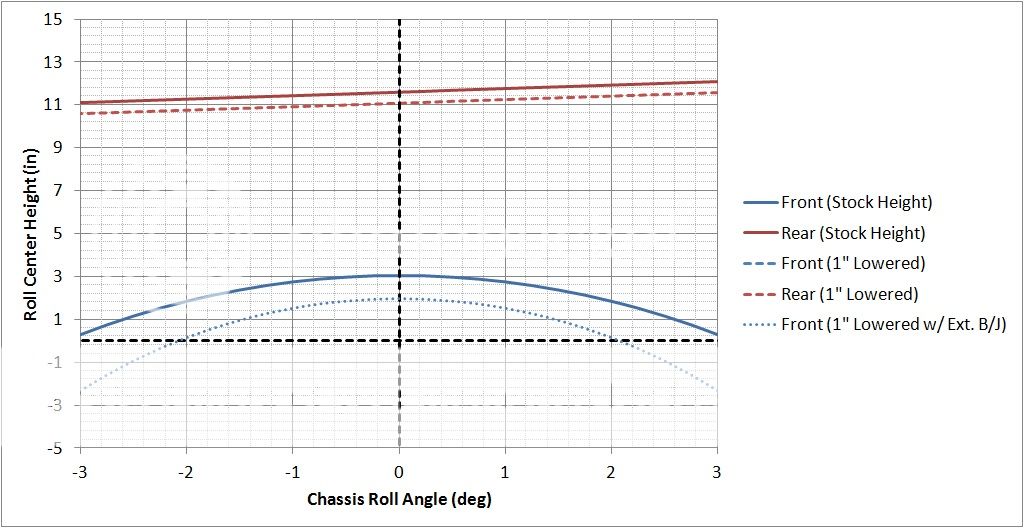Yep, I agree with Mark here. We've lowered hundreds of S197 Mustangs by 2 and even 3" from stock ride heights, and we don't ever use bumpsteer correction kits. Why? Because they don't need it. They drive just fine with the stock tie rods - and don't tend to have the unusual failures that bumpsteer kit equipped cars do. Same goes for aftermarket front control arms and a whole bunch of other parts made for the S197.
Remember: a good percentage of parts made for these cars are simply part of the array of "stuff" for you to buy. Available because someone makes it. Because people will buy it. Bolt-on braces, shiny doo-dads, whistle tips, and needlessly adjustable things to mess with, break and fail. They lighten your wallet but don't necessarily do anything worthwhile. This segment of the aftermarket is full of these things. If you add in all of the "style" crap made for the S197 that percentage of
worthless available parts is approaching 90%.
There is an internet mass hysteria surrounding certain voodoo modifications that simply cannot be explained with calculations, formulas or measurements. People spend countless hours debating roll center migration, roll couples and use terms like "kinematics" and other pseudo scientific jargon... but from what I've seen in the automotive forums for the past 2 decades, the more incomprehensible the terms used the more full of crap the writer usually is.
Look - certain geometries and constraints
are just part of a given chassis, and changing them to some new ideal could take tens of thousands of dollars worth in custom fabrication and parts - and usually have some serious side effects or entail other significant changes. The S197 chassis is light years better than the Fox/SN95 chassis that proceeded it (so much so that I always
BEG customers that come to us with Fox/SN95 race car wishes to look at the S197 first), but it still isn't perfect. You can make significant track performance enhancements in TIRES, spring rates, dampers, antiroll bars, a few bushings, and rear axle location devices. But at the end of the day it is a big, heavy McPherson strut car with a solid rear axle. At a certain point, after you hit the big stuff mentioned above, you are just polishing a turd.
Don't get sucked into these internet arguments that have almost no real solutions. This chassis has been around for a while and a lot of smart people have raced in them - pretty much the major development aspects that matter have been tackled, until there is some new unforeseen technological breakthrough. Ask the faster drivers in the same cars what they are doing, and why. Not all of them will know why, either - there is a lot of "follow the leader" mentality in racing. But for the most part, you will see a pattern of the Parts That Matter.
Yes, think outside the box. Strive to learn, and read the Carrol Smith books on racing set-up, the ThinkFAST books and the like. But don't get bogged down in trying to make your car into something it is not. Don't try to reinvent the wheel, when the one you have is perfectly round. I see people fixate on these intangible or unrealistic goals, yet they tend to be are the ones that are still running around on skinny street tires or have some other massive handicap they refuse to address. Get that low hanging fruit
first then worry about the minutia improvements later.
Honestly, if you want ideal suspension geometry, better street ride, and faster track performance... just go buy a C5/C6/C7 Corvette. That one "change" will elevate your goals far beyond you could ever achieve in an S197 chassis. Trust me, those GM engineers spent BILLIONS to develop those three Corvette chassis, and you ain't going to come up with a better suspension on a Mustang than that. Ever. Not trying to discourage you free thinkers and engineers, just keep that in mind - there is always a better chassis to start with. All of us here have Mustangs for various reasons, and I love this model, but it isn't a Corvette or a 911 or a Ferrari.
I love this chassis, and feel that it is the new car performance bargain for the past decade, bar none. Mostly due to the solid chassis and powerful 5.0L engine. It pains me to see people waste money on worthless parts trying to make these cars into something they are not. We could sell a LOT more "stuff" for these cars, and make more money doing it, but we won't do that. We talk people out of upgrades all the time, like when it doesn't meet the needs of their uses, or their experience/skill level. If you want honest advice on what works and what is a waste, just ask a shop you trust.
Anyway... that's just my two "grumpy old man" cents.
Get off my lawn! I'm not trying to poke fun at anyone or any company,just stating my long held opinion that most aftermarket parts sold are worthless crap, and most internet arguments are a waste of bandwidth.
Cheers....










